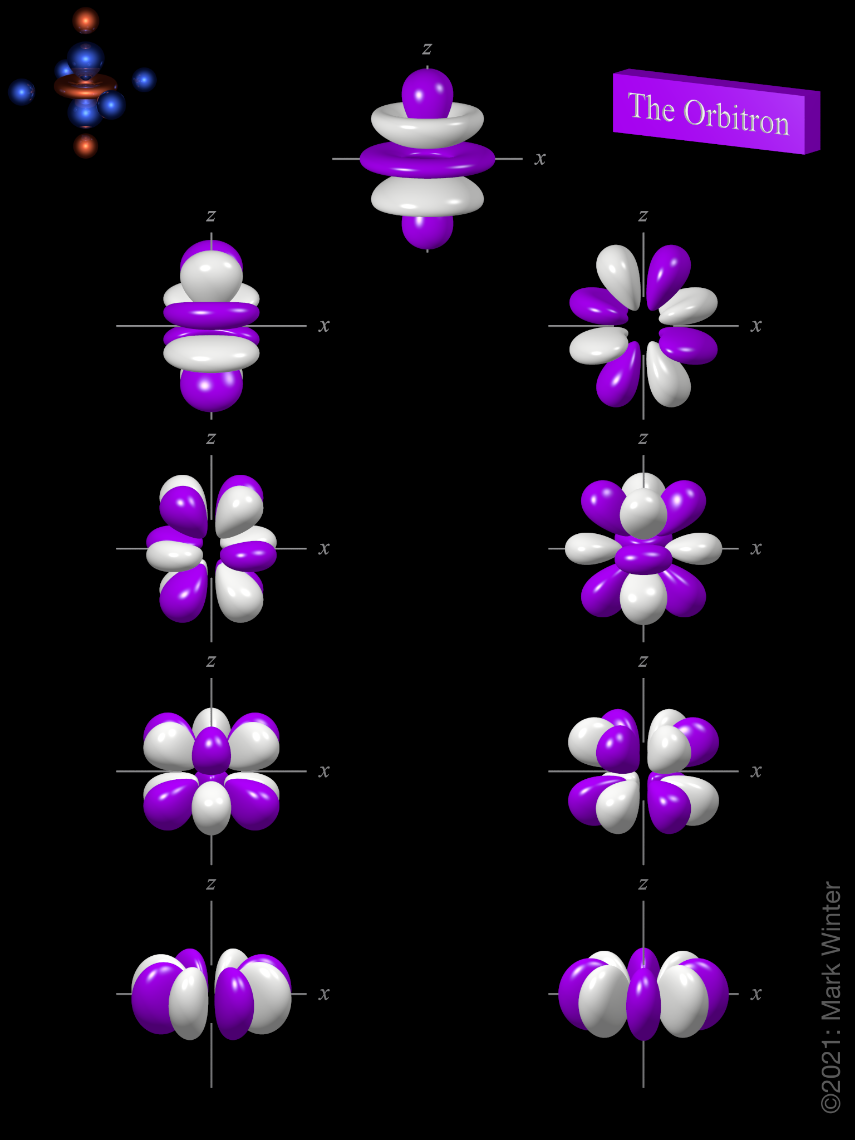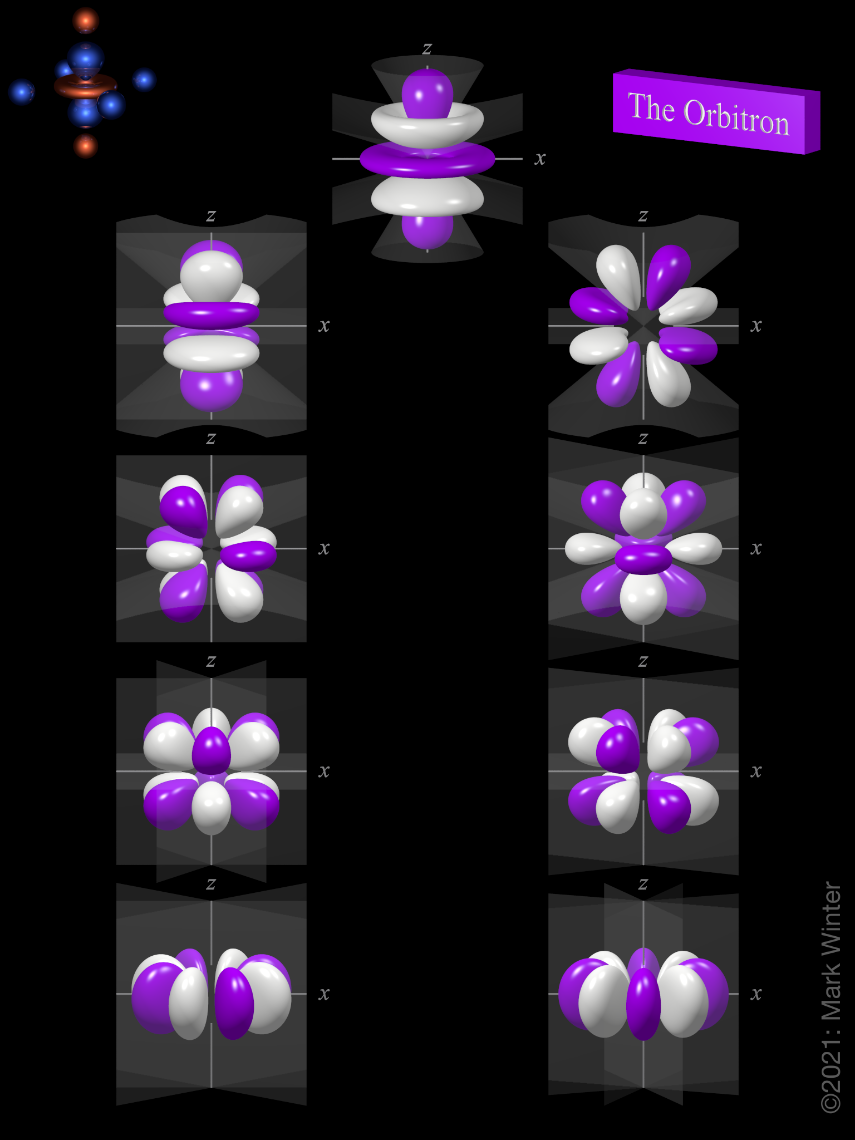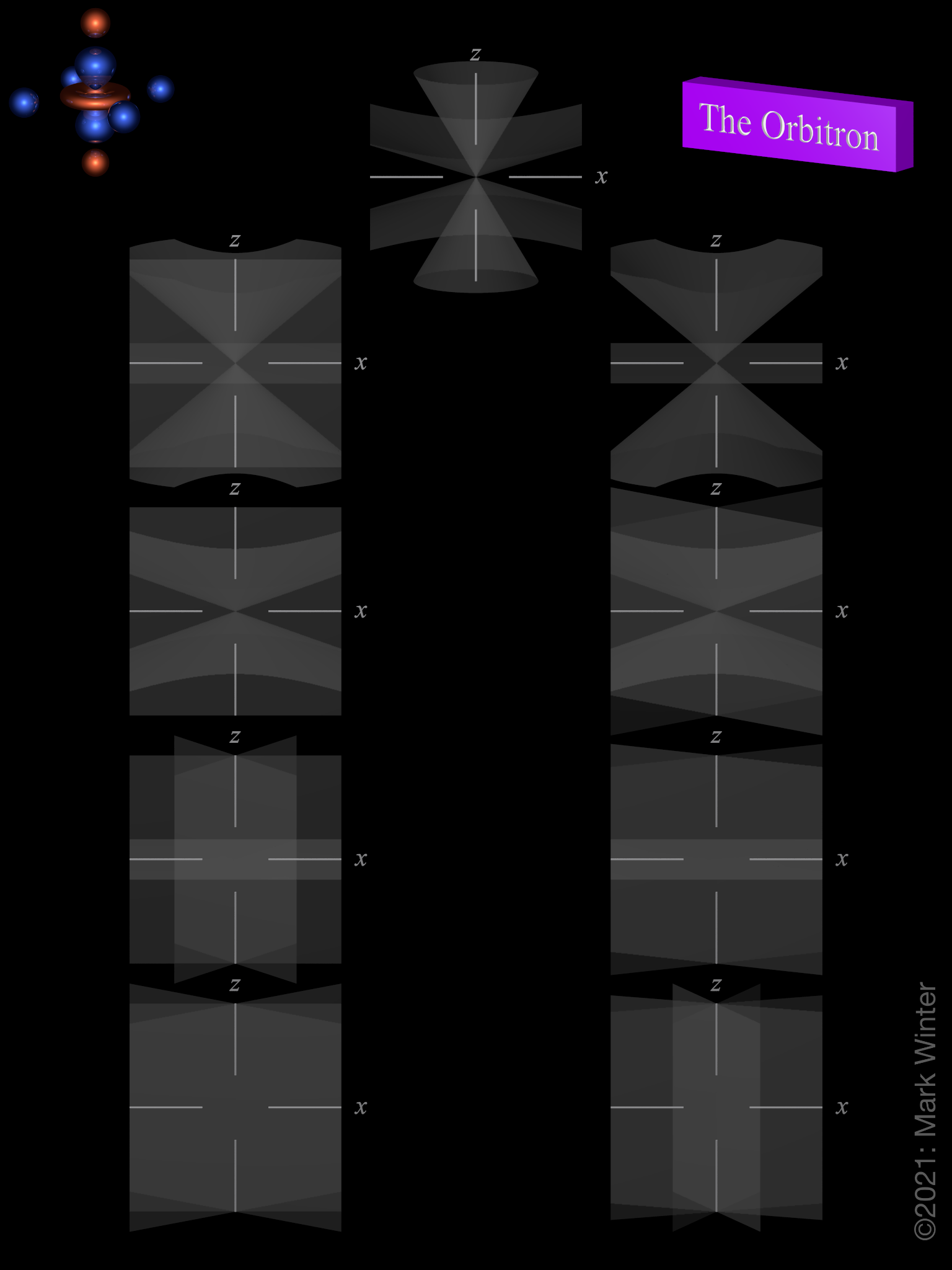5g atomic orbitals
For any atom, there are nine 5g orbitals. The higher g-orbitals (6g and 7g) are more complex since they have spherical nodes.
The shapes of the nine 5g orbitals. From left to right: (top row) 5gz4; (next to top row) 5gz3y and 5gz3x; (centre row) 5gz2xy and 5gz2(x2 - y2); (next to bottom row) 5gzy3 and 5gzx3, (bottom row) 5gxy(x2-y2) and 5gx4+y4. For each, the purple zones are where the wave functions have positive values and the white zones denote negative values.
The 5gz4 orbital (top row in the image above) is an abbreviation for 5g35z4 - 30z2r2 + 3r4.
The 5gz3y orbital (left orbital in next to top row in the above image) is an abbreviation for 5gyz(7z2 - 3r2). The 5gz3x orbital (right orbital in next to top row in the above image) is an abbreviation for 5gxz(7z2 - 3r2). These two orbitals are related to each other by a 90° rotation about the z-axis.
The 5gz2xy orbital (left orbital in centre row in the above image) is an abbreviation for 5gxy(7z2 - r2). The 5gz2(x2 - y2) orbital (right orbital in centre row in the above image) is an abbreviation for 5g(x2 - y2)(7z2 - r2). These two orbitals are related to each other by a 45° rotation about the z-axis.
The 5gzy3 (left orbital in next to bottom row in the above image) is an abbreviation for 5gyz(3x2 - y2). The 5gzx3 orbital (right orbital in next to bottom row in the above image) is an abbreviation for 5gxz(x2 - 3y2). These two orbitals are related to each other by a 30° rotation about the z-axis.
The 5gxy(x2-y2) (left orbital in bottom row in the above image) and 5g(x4+y4) (right orbital in bottom row in the above image) are related to each other by a 22.5° rotation about the z-axis.
The OrbitronTM, a gallery of orbitals on the WWW: https://winter.group.shef.ac.uk/orbitron/
Copyright 2002-2023 Prof. Mark Winter [The University of Sheffield]. All rights reserved.


